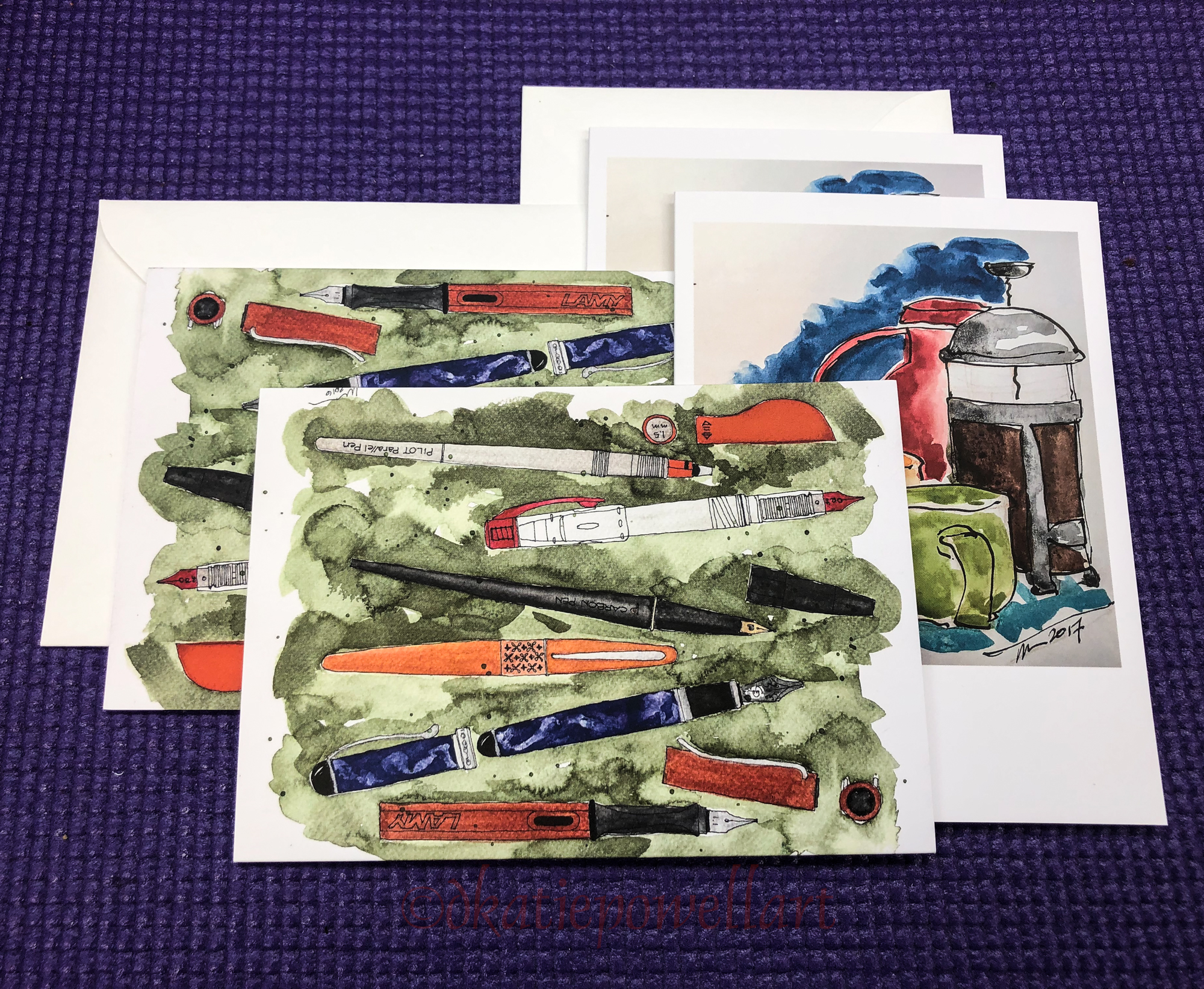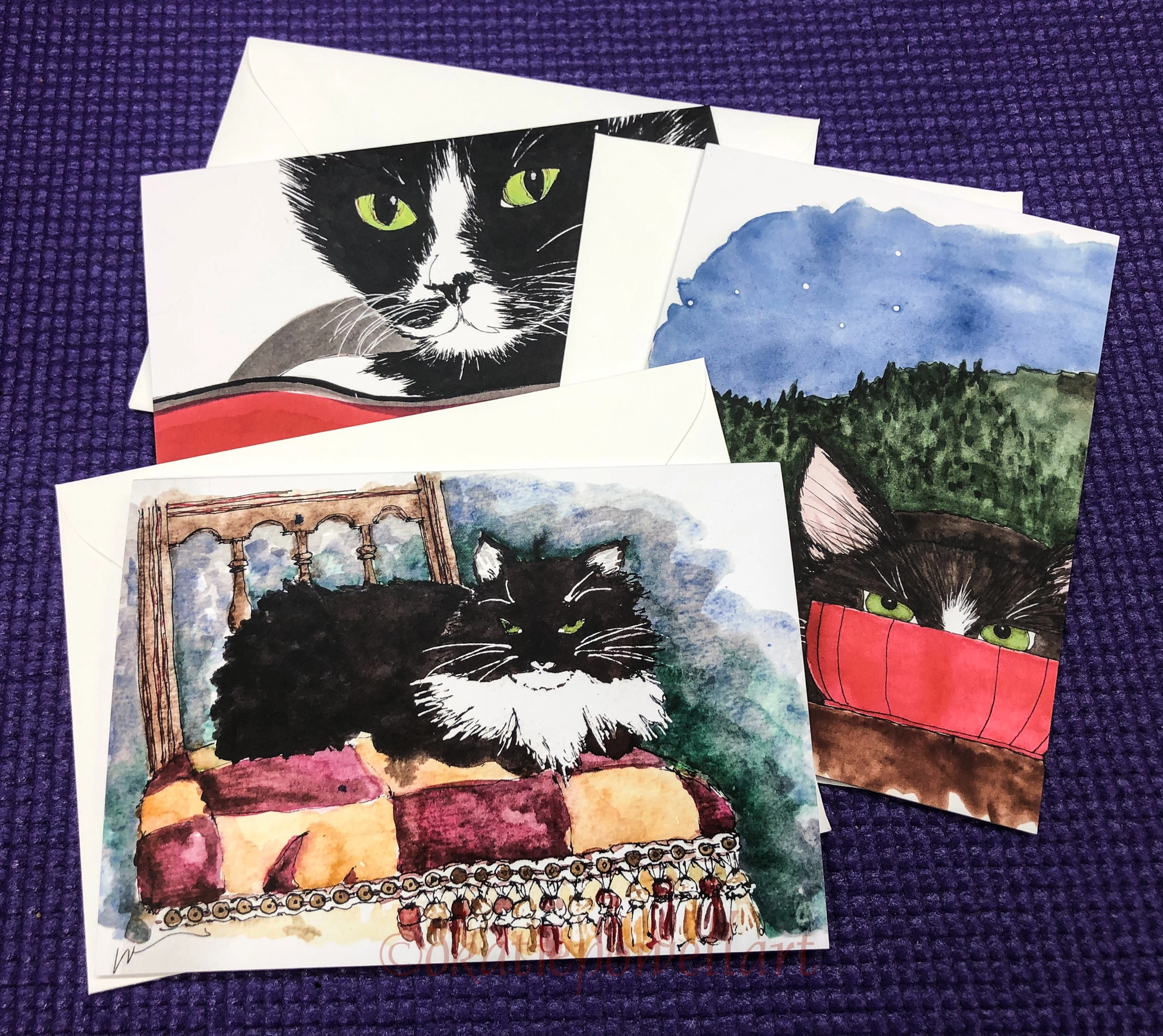A couple of years ago I went on a hunt for a perfect red.
Being a primary color, a “perfect red” needs to be neither leaning yellow-orange,
nor to purple-blue… it needs to be that lovely middle color!
My favorite color…
Okay, one of them!
This is one of those perfect reds, and they are a rarity,
because while a light spectrum can make that wonderful color,
inks (like watercolors and other forms of mark-making products) are made of dyes (usually but sometimes pigments) suspended in a carrier or vehicle.
In fountain pens, that carrier is water, though other solvents may be added
to slow drying, change the PH, or to retard bacterial growth.
A good chemist can produce a perfect red, but it must be difficult,
because most “reds” are red-orange, or very pink, leaning blue!
The amazing Robert Oster has done exactly that!
Remember that others review these inks just for writing;
I am also interested in how they are used for ink-painting!

Properties of Robert Oster Fire Engine Red ink:
I am making up my own definitions, and I have been referring to pure colors
like Fire Engine Red as simple colors, versus the complex colors
we’ve seen where the ink separates into many different hues when wet.
Fire Engine Red dilutes into lighter versions of the same beautiful red.
I see no real sheen, just a dense version of the dye…
 Looking at watercolor comparisons for Fire Engine Red, in my palette the colors range from Quinacridone Red (Sennelier), Perylene Red or Scarlet (Daniel Smith). In watercolors that puts the pigments in the following Munsell ranges:
Looking at watercolor comparisons for Fire Engine Red, in my palette the colors range from Quinacridone Red (Sennelier), Perylene Red or Scarlet (Daniel Smith). In watercolors that puts the pigments in the following Munsell ranges:
PR209 / PR178 / PR149.
To understand more about the Munsell system and others,
go to these two wonderful references pages; knowing the pigments can help you not to duplicate watercolors made of the same pigment:
https://www.handprint.com/HP/WCL/vismixmap.html
https://www.handprint.com/HP/WCL/color7.html#munsell
 Fire Engine Red ink is
Fire Engine Red ink is
well-behaved. It is neither
wet nor dry, and does not
feather on any of the papers I
normally use, even Post-its.
It evaporates quickly
with a wet nib; I’ve not
had smears even with
the wettest sketch, below.
When hit with water it
moves easily with no
resistance or ghosting,
so is not water resistant.
It has a permanent home in
my lovely Diplomat Aero
with a Medium nib, right.
RO is experimenting and testing light-fast properties…
MOST water soluble ink companies do not pay attention to these things
because most artists who use ink are making prints of their work.

Fire Engine Red is a lovely ink with which to paint. My chili peppers
were drawn with a Diplomat Aero with a Medium nib on cold press watercolor paper.
In this case I dipped my Pentel Aquash waterbrush into a test vial with the
undiluted Fire Engine Red, and where I wanted a bit lighter red for highlights
I squeezed a little water into the mix. If you want to try ink painting,
do lots of tests with the inks you want to use to see how they perform.
Inks dry quickly compared to watercolors, so once you start you have to move fast,
or you get blooms each time you go back into the image with ink! I also have to
think a bit more about how I want to paint an image, in what order… again, they dry fast. Sometimes it helps to get the paper wet before you start inking,
but know that the ink make creep outside the lines you’ve drawn
(I did not do that in the images above or below).
The lines drawn with Fire Engine Red did not stay visible;
they quickly lose themselves in wet color.
The lines were added back in after the water moved the ink and dried!

 On smooth Hahnemühle Nostalgie
On smooth Hahnemühle Nostalgie
sketchbook paper I sketched
this bright red flower, above, then
touched the waterbrush to the lines,
sometimes dipping back into
the ink in the fountain pen tip…
such a well-behaved ink
even on smooth paper.
On the very poor quality (but fun)
Bright Ideas multi-color journal pages,
the red ink performed well.
NO feathering even when laying it on thick.

 Our Valentines breakfast doodle,
Our Valentines breakfast doodle,
above, drawn on the smooth Hahnemühle Nostalgie Sketchbook Many hearts drawn on watercolor paper in the Hahnemühle ZigZag Journal for Inktober, right!
Below, Notre Dame was a demo scribble sketch in the Nostalgie, and just touching lines moved the ink beautifully. A thicker line will lay down more color when wet.
His inks are non-toxic.
I have more Robert Oster inks than
any other maker of ink. Why? Because no other brand has the spectacular pigmentation within a color, which gives even his simplest inks such beauty that it is a shame to waste them only writing!

BTW, never ever use any ink that is not meant for fountain pens in your pen.
Dip pens can use just about anything, so make absolutely sure
the bottle says that it is for fountain pens!
Do not listen to the big box sales person, read the bottle or if in doubt, don’t do it!
I bought Robert Oster Fire Engine Red at Vanness;
Jetpens also carries it.
Other Robert Oster Inks reviewed in this manner:
Robert Oster Jade
Robert Oster Thunderstorm
 To hear about classes, follow me on Facebook
To hear about classes, follow me on Facebook
or check out my new, improved dkatiepowellart.com
“Memory is more indelible than ink.”
Anita Loos, Gentlemen Prefer Blondes.
“I think not….”
Me… why I journal!





©D. Katie Powell.
My images/blog posts may be reposted; please link back to dkatiepowellart.
☾
 As my Patreon supporter, you will have
As my Patreon supporter, you will have
access to some content not on this website,
sneak previews, goodies, discounts on classes.
I teach architectural sketching,
art journaling (art+writing), creativity, watercolors.
That annoying loud-mouth editor/critic in your head? GONE! How great would that be?


























Pingback: Inks in Depth: Robert Oster Aussie Brown | D.Katie Powell Art
Pingback: Inky Thots: Robert Oster Charcoal | D.Katie Powell Art
Pingback: Inky Thots: Akkerman 21 Chinatown Red | D.Katie Powell Art
Pingback: Inky Thots: Robert Oster Green at Night | D.Katie Powell Art
Pingback: Inky Thots: Robert Oster African Gold | D.Katie Powell Art
Pingback: Inky Thots: Robert Oster Monsoon Clouds | D.Katie Powell Art